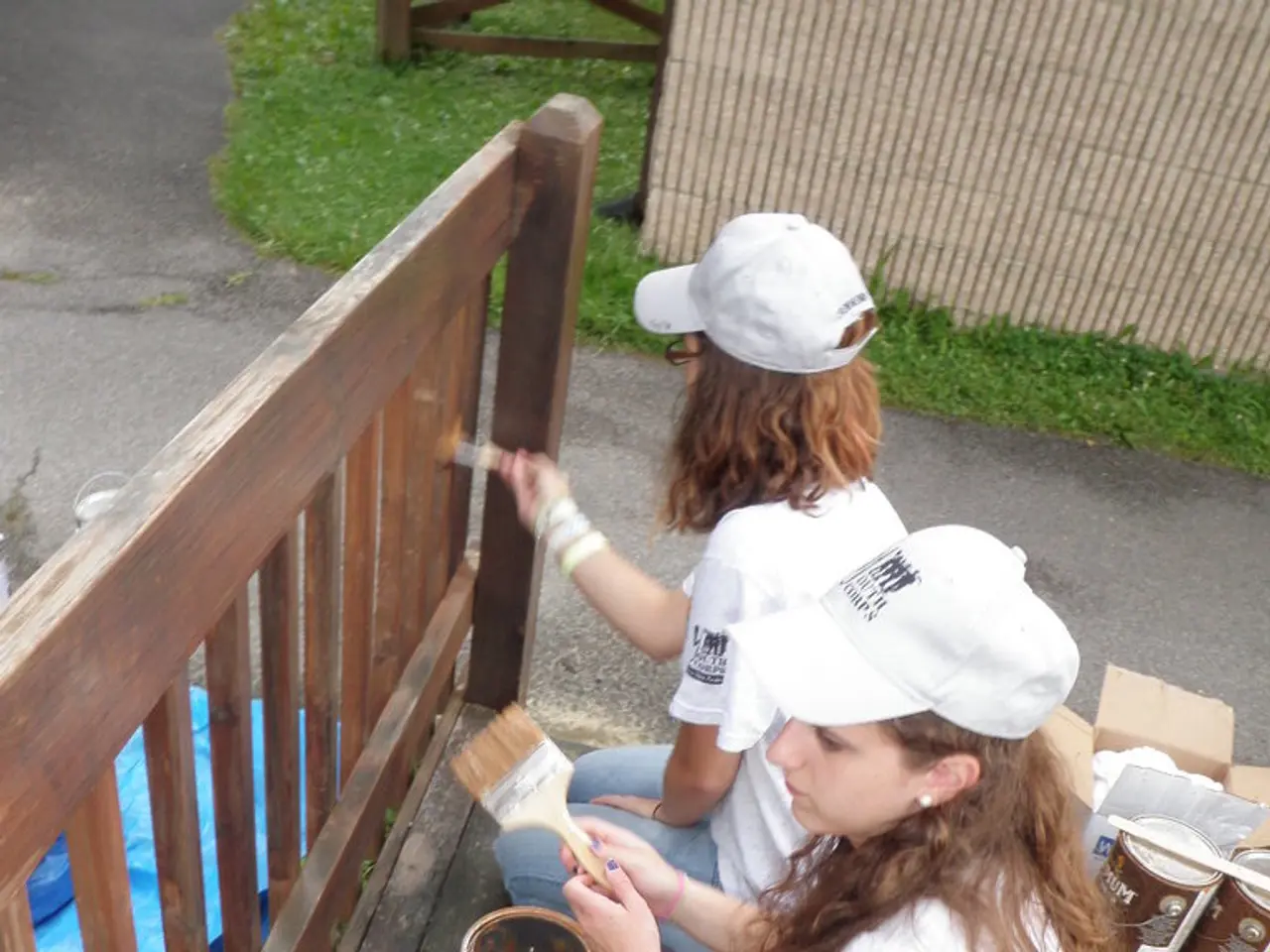Debating between eggshell and satin paint for your decor? Allow us to guide your decision-making process, revealing which option is the optimal choice.
Article: Understanding the Differences Between Eggshell and Satin Paint Finishes
In the world of interior painting, two popular choices are eggshell and satin paint finishes. These finishes offer distinct advantages when it comes to durability, cleanability, and appearance.
Michael Rolland, a painting expert and the Managing Director of The Paint Shed, explains the practical differences between these two finishes.
Durability
When it comes to durability, satin paint generally outperforms eggshell due to its higher sheen level. This makes satin less prone to scuffs and marks. However, when proper primer and preparation are used, both finishes have quite comparable durability, especially if oil-based paints are chosen.
Cleanability
Satin is easier to clean than eggshell because the higher sheen creates a smoother surface that resists dirt. Eggshell paint, on the other hand, has moderate cleanability—better than flat finishes, but less so than satin.
Application
Both finishes apply similarly, but satin’s slight sheen gives a glossier, more contemporary look, making it ideal for woodwork such as skirting boards, doors, and furniture in high-traffic areas. Eggshell provides a softer, low-lustre finish suited for walls and ceilings in living rooms, bedrooms, and low-traffic areas.
Best Use
Eggshell is better suited for areas that don’t get much traffic, such as ceilings, bedrooms, and less-used areas of a kitchen. It's often preferred for covings or areas where a softer, less reflective finish is desired. Satin, however, is a better choice for high-traffic areas like skirting boards, hallways, and living rooms due to its durability and ease of cleaning compared to eggshell.
Appearance
Eggshell offers a classic, soft finish, while satin has a noticeable smooth sheen and is more reflective. Mixing them is common: eggshell for walls and satin for wood trim, balancing aesthetics and durability.
Practical Comparison
| Aspect | Eggshell | Satin | |---------------|-----------------------------------------------|-----------------------------------------------| | Sheen | Low sheen, soft, subtle | Higher sheen, slight gloss | | Durability| Moderate, slightly less durable | More durable, less prone to marks and scuffs | | Cleanability | Moderate cleanability | Easier to clean, better for frequent wiping | | Best Use | Walls, ceilings, low-traffic rooms (bedrooms, living rooms) | Woodwork, kitchens, bathrooms, high-traffic areas (hallways, trim) | | Appearance | Classic, soft finish | Contemporary, slightly glossy finish |
Expert Advice
Pav Wasik, Founder of Uptown Interiors, states that there isn’t a big difference in durability between eggshell and satin if the correct primer and preparation are used. Ashley Aspin recommends using the recommended primer, undercoat, and topcoat designed to work together for the best results.
When painting woodwork or areas that require frequent wiping, eggshell isn’t recommended. Instead, opt for satin paint, which is easier to wipe clean. Both paints should ideally be cleaned with a cloth and warm soapy water. If a stubborn stain appears on an eggshell surface, use well-diluted sugar soap, but be gentle.
Every paint brand has its own system, and the sheen levels aren’t standardized across different manufacturers. Therefore, it’s essential to check the sheen levels of the paints you choose to ensure you’re making the right decision for your project.
For more information on proper painting techniques, check out guides on sanding walls, painting wood, and painting a panel door.
- In the realm of interior design, homeowners often ponder between using eggshell and satin paint finishes, each offering unique qualities for different purposes.
- According to Michael Rolland, a painting expert, satin paint, with its higher sheen level, demonstrates improved durability compared to eggshell, making it less prone to scuffs and marks.
- When it comes to cleanability, satin paint is easier to clean due to its smoother surface, while eggshell offers moderate cleanability, particularly well-suited for less-used areas like bedroom ceilings.
- In terms of application, satin's slight sheen gives a glossier, contemporary look, making it ideal for high-traffic areas like woodwork, doors, and furniture. Eggshell provides a softer, low-lustre finish for walls and ceilings in living rooms and low-traffic areas.
- When deciding on the best use for these finishes, satin is better suited for high-traffic areas like kitchens, bathrooms, and hallways, while eggshell is more appropriate for low-traffic rooms like bedrooms and less-used parts of the kitchen.
- For more insight into painting techniques, consult home-and-garden projects guides focused on sanding walls, painting wood, and painting a panel door to achieve successful results with your chosen paint finishes.




